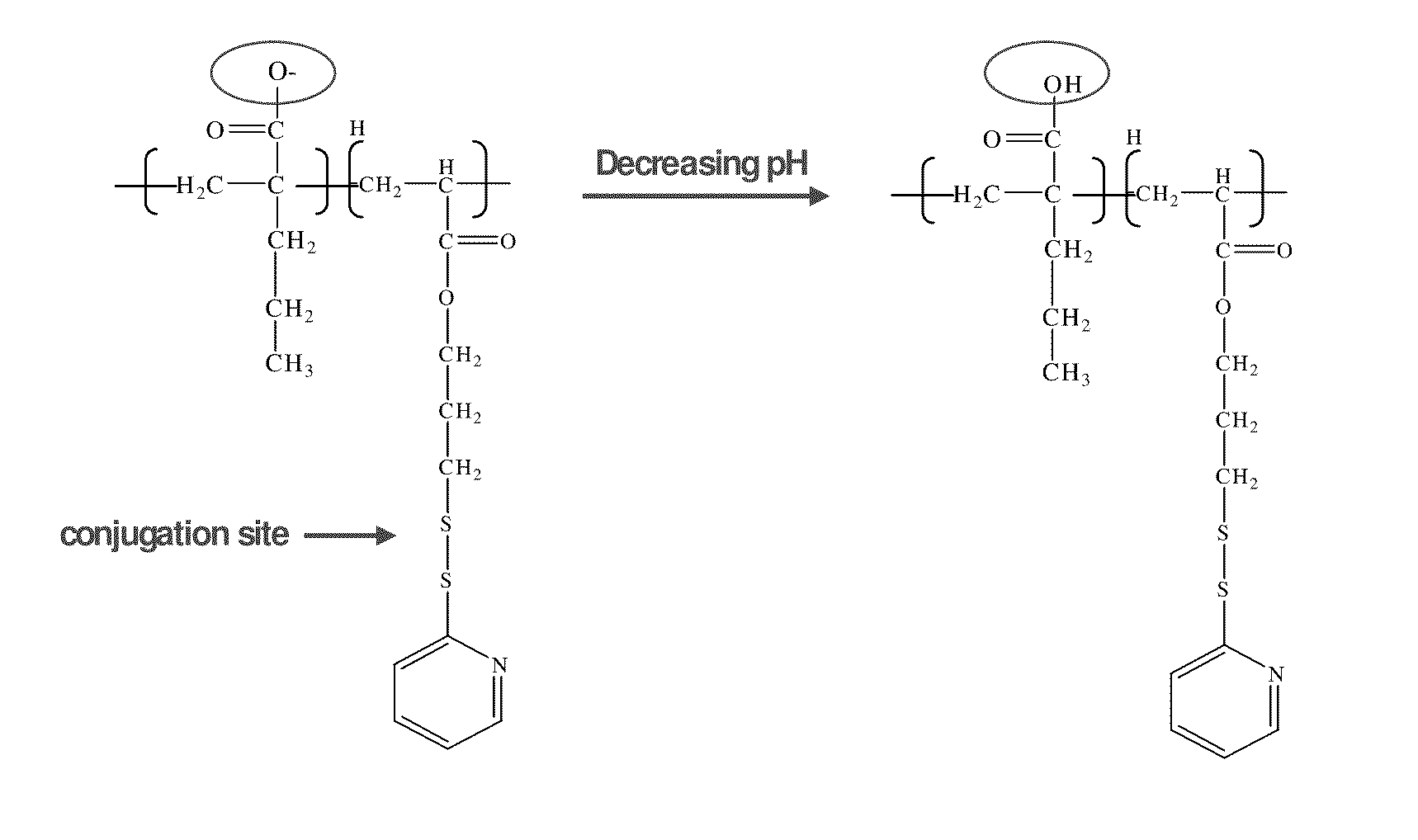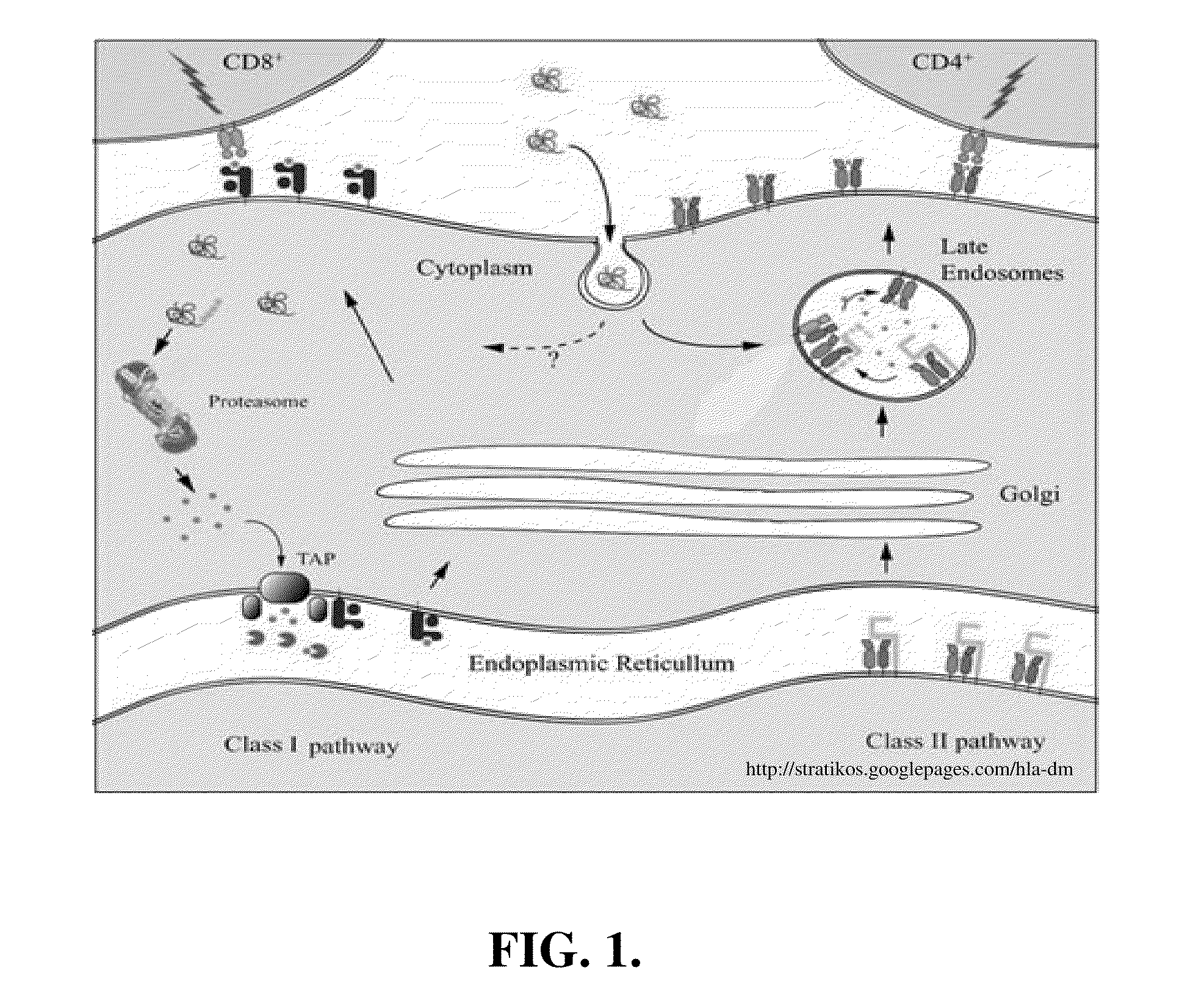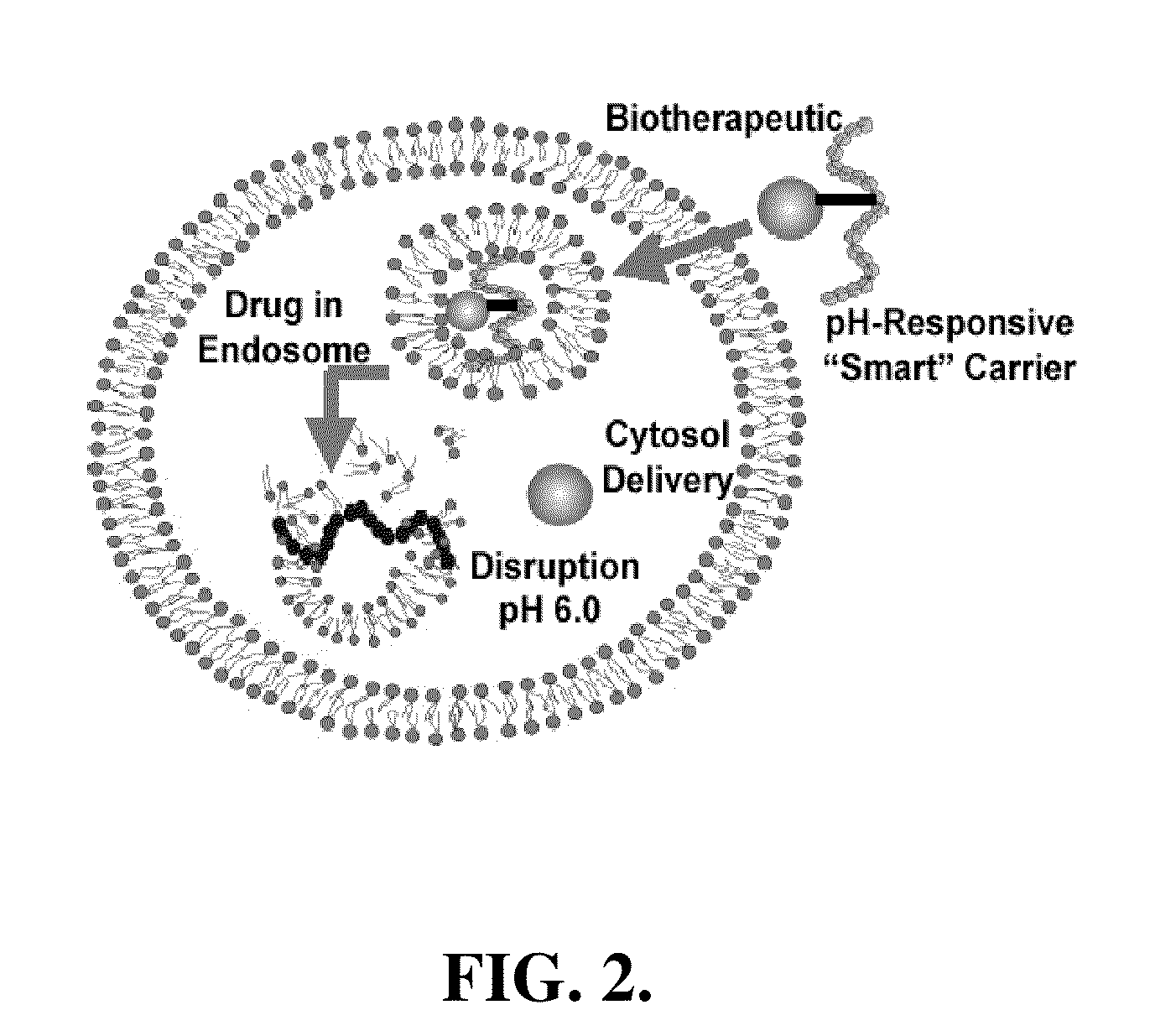pH-RESPONSIVE POLYMER CARRIER COMPOSITIONS FOR CYTOSOLIC PROTEIN DELIVERY
a polymer carrier and cytosolic protein technology, applied in drug compositions, carrier-bound antigen/hapten ingredients, antibody medical ingredients, etc., can solve the problems of presenting a greater challenge to immunotherapy, unable to develop optimal carriers, and unable to effectively deliver these antigens to elicit a potent immune response, etc., and achieve the effect of increasing the amount of ovalbumin
- Summary
- Abstract
- Description
- Claims
- Application Information
AI Technical Summary
Benefits of technology
Problems solved by technology
Method used
Image
Examples
example 1
Preparation and Characterization of a Representative pH-Responsive Polymer Composition
PPAA-Ovalbumin
[0166]PPAA-PDSA. For the synthesis of the PPAA-PDSA polymer, 0.007 mol propylacrylic acid (PAA) (Gateway Chemical Technology, St. Louis, Mo.), 0.00011 mol PDSA (synthesized according to previous protocols), and 0.000056 mol free-radical initiator azobisisobutyronitrile (AIBN, purified by recrystallization from methanol) were combined in a 5 ml flask and degassed by 4 rounds of freeze-vacuum-thaw then reacted at 60° C. for 24 hours. The polymer was dissolved in 3 ml dimethyl formamide (DMF) and purified by 3 rounds of precipitation in 500 ml diethyl ether.
[0167]PMAA-PDSA. Poly(methacrylic acid-co-PDSA) (PMAA-PDSA) was synthesized for use as a control polymer. It was formed by reversible addition fragmentation chain transfer polymerization (RAFT) by combining 0.016 mol methacrylic acid (MAA) (purified by distillation), 0.00022 mol PDSA, 0.000052 mol chain transfer agent 4-cyanopentanoic...
example 2
Preparation and Characterization of 14C-Ovalbumin Conjugates
[0175]Preparation of PPAA / PMAA-14C-Ovalbumin Conjugates. Radioactively labeled ovalbumin-PPAA-PDSA and PMAA-PDSA conjugates were formed for tracking of the ovalbumin in cellular uptake and exocytosis experiments. The procedure used was similar to that described above for conjugate synthesis, except that a 14C label was added to ovalbumin. Ovalbumin was mixed with a 20× molar excess of Traut's reagent, followed by a 3× molar excess of 14C-iodoacetamide (MP Biomedical, Solon, Ohio). After reacting for 1 hour, a 2.5× molar excess of polymer, either PPAA or the negative control polymer PMAA, was added. Conjugates were again characterized by GPC in 0.1M sodium phosphate buffer pH 8 using PEG standards, and the final weight percent of ovalbumin was determined by a BCA assay. The amount of 14C per conjugate was determined by liquid scintillation counting, using a Beckman-Coulter LS600 liquid scintillation counter and EcoScint scin...
example 3
Formulation and Characterization of Representative Ionic Particles
PPAA-Ovalbumin / pDMAEMA
[0178]Ionic Particle Formation. Particles were formed by ionic complexation of the cationic pDMAEMA with the anionic PPAA-Ova conjugate. Conjugates were formed according to the procedures outlined in Examples 1 and 2. Briefly, ovalbumin was mixed with Traut's reagent, which reacts with lysine amines to give reactive SH groups. 10-15% of the 20 available lysines were modified. In the case of the radiolabeled conjugates used for the uptake / exocytosis studies, 30% of the amines were modified, to provide additional sites for attachment of the 14C label. The ovalbumin-SH was purified on a PD-10 desalting column, then reacted with the PDSA moiety on the PPAA or PMAA polymer. The conjugate was purified and exchanged to PBS using a Zeba desalting spin column, then stored at 4° C., omitting the lyophilization and freezing processes previously used. pDMAEMA was synthesized by RAFT (reversible addition frag...
PUM
| Property | Measurement | Unit |
|---|---|---|
| pH | aaaaa | aaaaa |
| pH | aaaaa | aaaaa |
| concentration | aaaaa | aaaaa |
Abstract
Description
Claims
Application Information
 Login to View More
Login to View More - R&D
- Intellectual Property
- Life Sciences
- Materials
- Tech Scout
- Unparalleled Data Quality
- Higher Quality Content
- 60% Fewer Hallucinations
Browse by: Latest US Patents, China's latest patents, Technical Efficacy Thesaurus, Application Domain, Technology Topic, Popular Technical Reports.
© 2025 PatSnap. All rights reserved.Legal|Privacy policy|Modern Slavery Act Transparency Statement|Sitemap|About US| Contact US: help@patsnap.com



